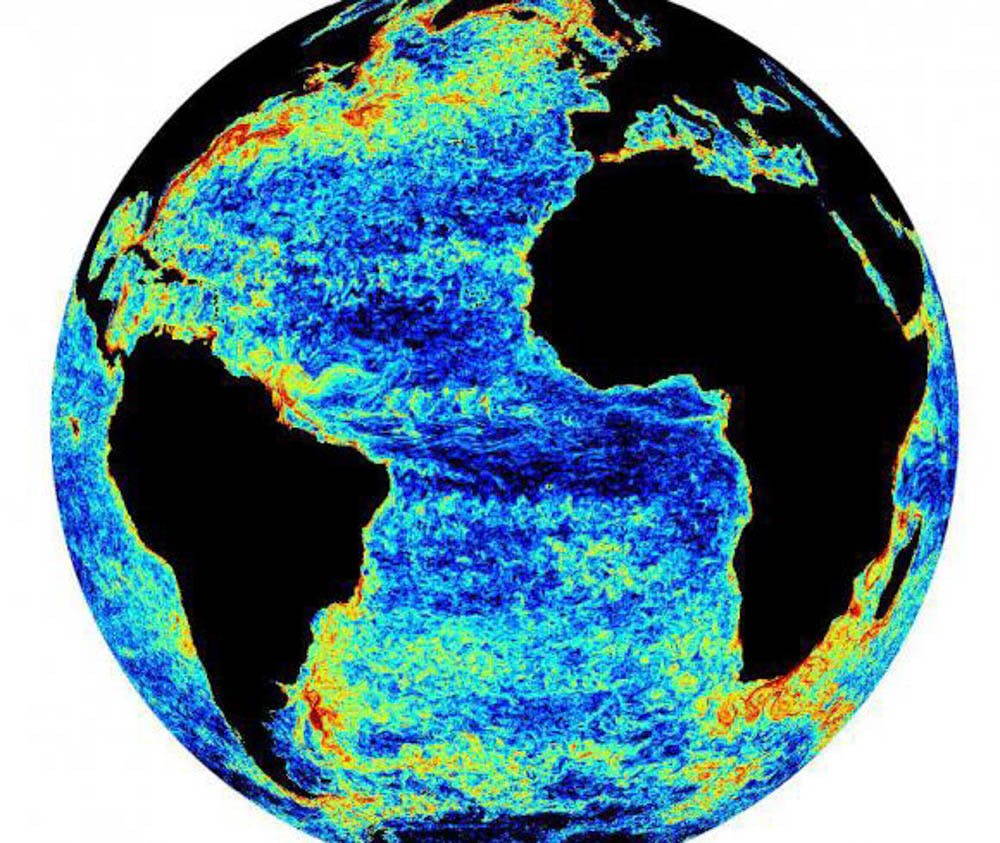Scientists have long examined the dynamics of the ocean, and a recent study conducted by University researchers brings new insight into the properties of ocean turbulence. The results of the study have the potential to develop better models of ocean currents, which could consequently improve climate models.
The study, which focused on how large-scale turbulence in the ocean dissipates energy, focused on the properties of eddies — a specific kind of turbulence flow. “Eddies are like spinning passes of fluid in the ocean,” said Brodie Pearson, postdoctoral researcher in earth, environmental and planetary sciences and co-author of the study. The size of these eddies can range from 10 to 100 kilometers wide, he said. The research focused on the properties of a particular kind of eddy — mesoscale eddies, the largest known type.
Though examining the energy dissipation of mesoscale eddies was the core of the study, this was not what the researchers initially intended to investigate, said Baylor Fox-Kemper, associate professor of earth, environmental and planetary sciences and co-author of the study. “(In) some studies, you find what you set out to look for, and (in) some studies you find something along the way that you realize is interesting and worth pointing out and maybe has a significance beyond what you were setting out to study,” he said. “This is in the latter category.”
The researchers initially aimed to evaluate a new change to high-resolution climate models by creating a series of tests to compare different models, Fox-Kemper said. “In the course of doing that, we noticed that one particular property — the energy dissipation rate — behaved, in a statistical sense, in a way we didn’t expect it to.”
The models indicated that the energy dissipation of mesoscale eddies followed a particular kind of statistical distribution, known as a lognormal distribution. In most statistical distributions, a typical measurement is close to the average, Fox-Kemper said. “What’s important about a lognormal distribution is that a typical measurement is very far away from the average,” he explained.
“It has been well-known that small-scale turbulence follows a lognormal distribution,” Fox-Kemper said. “The key insight is that small-scale behavior seems to occur in a very different large-scale kind of turbulence.”
“As an observational oceanographer, this (finding) makes life very difficult,” said Carl Wunsch, professor emeritus of physical oceanography at the Massachusetts Institute of Technology. One can no longer assume that an observation of a process in any one part of the ocean reveals much about the same process in another part of the ocean, he explained. This could be troublesome for both scientists who observe the oceans and those who make numerical models.
“What (Wunsch) is talking about is absolutely true,” Fox-Kemper said, agreeing that lognormality may present a challenge for scientists. Despite the difficulties this may pose, it is likely to increase the accuracy of climate models in the future. “If the real world behaves in the same way as these models do — which we don’t have any obvious reason to doubt — then we need to consider this effect as we think about the flow of energy from large scales to small scales in our climate models,” Fox-Kemper said.
For instance, when running high-resolution models, scientists ought to check that the statistics they obtain are consistent with lognormality, he explained. If not, the model is quite possibly inaccurate. Furthermore, all measurements of large-scale to small-scale energy transfer should be interpreted as being part of a lognormal distribution and not any other statistical distribution, he noted.





